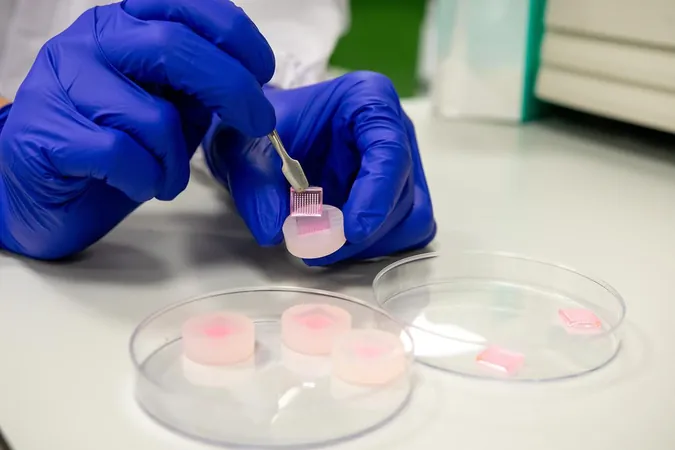
Revolutionary Microneedle Technology Offers Hope for Diabetic Wound Healing in Singapore
2025-03-23
Author: Arjun
SINGAPORE -
Each day, approximately four individuals in Singapore face the grim possibility of having their lower limbs amputated due to non-healing diabetic wounds, a serious consequence of the 400,000 residents living with diabetes in the country. However, there is a promising breakthrough on the horizon. Researchers from the National University of Singapore (NUS) have developed innovative microneedle technologies that could significantly enhance the healing process for these debilitating wounds and potentially reduce amputation rates.
Diabetic wounds often heal slowly due to several factors, including poor blood circulation, a compromised immune system, and persistent inflammation. The NUS research team has harnessed the power of microneedles—tiny needles measuring as small as one micrometre (0.001mm), thinner than a human hair—to create effective solutions that facilitate faster healing.
The first breakthrough consists of sucralfate microneedles designed to deliver interleukin-4 (IL-4), a protein that promotes cell growth and tissue regeneration. Sucralfate, primarily used for treating gastrointestinal ulcers, protects these growth factors from breakdown within the diabetic wound environment. Unlike traditional hydrogel applications, these microneedles dissolve directly at the wound site, allowing for targeted delivery while minimizing systemic side effects and potential damage to newly formed tissues.
Remarkably, this method has doubled the wound healing rate compared to conventional treatments, offering patients a much-needed lifeline. Assistant Professor Andy Tay, leading the NUS team, emphasizes the critical advantage that microneedles provide by reaching the inflammation deep within the tissue, a workaround to the limitations of surface-level applications.
In addition to enhancing healing, the research team has also developed a second microneedle innovation that targets inflammatory responses. Heparin-coated porous microneedles have shown promise in extracting harmful pro-inflammatory proteins and immune cells, leading to a staggering 50% reduction in tissue inflammation and a 90% wound size reduction by day 14 of treatment. These findings highlight the potential for microneedles not only to treat diabetic wounds but also to address broader inflammatory skin disorders prevalent among diabetics.
Looking ahead, the researchers plan to develop personalized microneedle treatments using 3D printing technology, customizing the patches to match individual wound shapes for enhanced effectiveness. They are also exploring the integration of antibacterial properties into the microneedles to combat infection risks. With a grant of $300,000 from A*Star, the team is proceeding towards clinical trials, marking a potentially transformative step in diabetic wound care.
Professor Tay notes that the implications of this microneedle technology extend beyond healing; it could also help bridge the healthcare inequality gap, particularly for lower-income individuals disproportionately affected by diabetic wounds and the threat of amputation. “It’s crucial that we develop solutions that are simple and cost-effective,” he stated.
With such pioneering advancements in microneedle technology, there is newfound hope for millions struggling with diabetic wounds, promising a future where the risk of amputation becomes a relic of the past.


 Brasil (PT)
Brasil (PT)
 Canada (EN)
Canada (EN)
 Chile (ES)
Chile (ES)
 Česko (CS)
Česko (CS)
 대한민국 (KO)
대한민국 (KO)
 España (ES)
España (ES)
 France (FR)
France (FR)
 Hong Kong (EN)
Hong Kong (EN)
 Italia (IT)
Italia (IT)
 日本 (JA)
日本 (JA)
 Magyarország (HU)
Magyarország (HU)
 Norge (NO)
Norge (NO)
 Polska (PL)
Polska (PL)
 Schweiz (DE)
Schweiz (DE)
 Singapore (EN)
Singapore (EN)
 Sverige (SV)
Sverige (SV)
 Suomi (FI)
Suomi (FI)
 Türkiye (TR)
Türkiye (TR)
 الإمارات العربية المتحدة (AR)
الإمارات العربية المتحدة (AR)